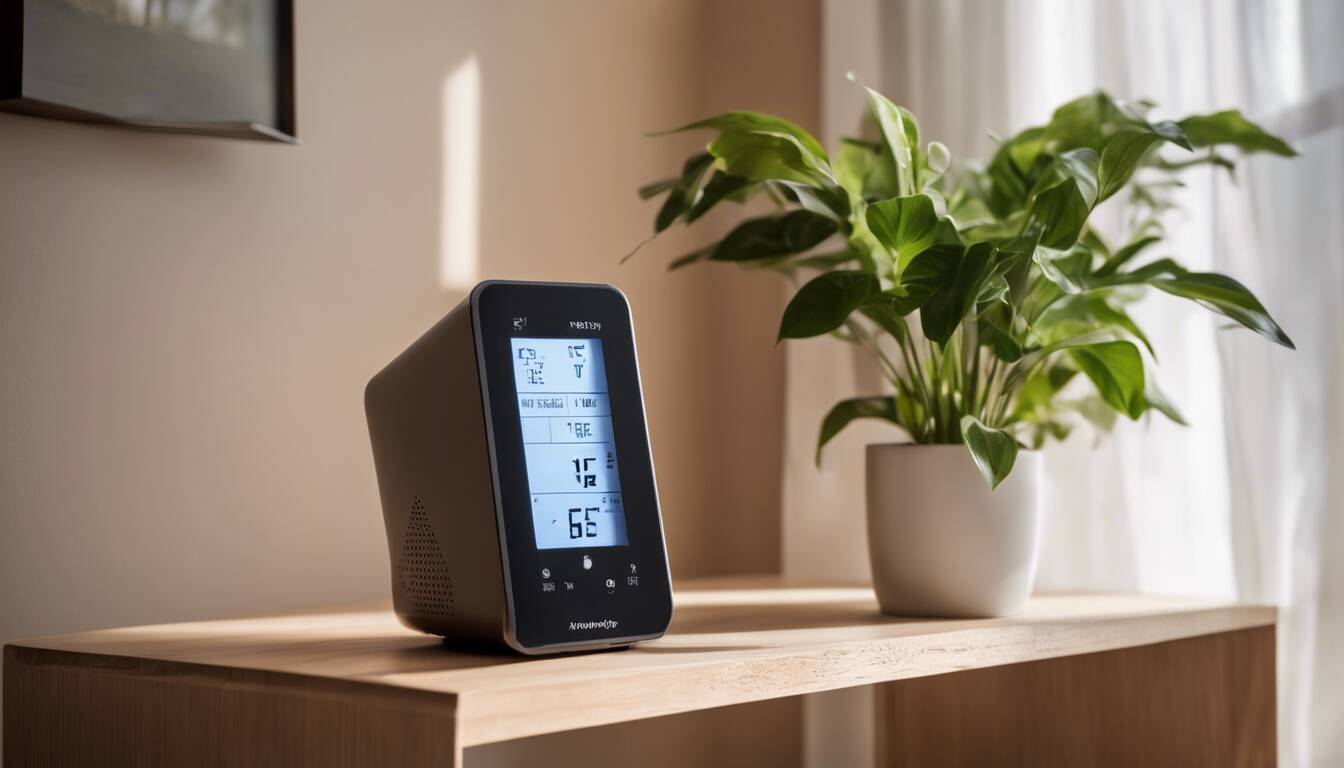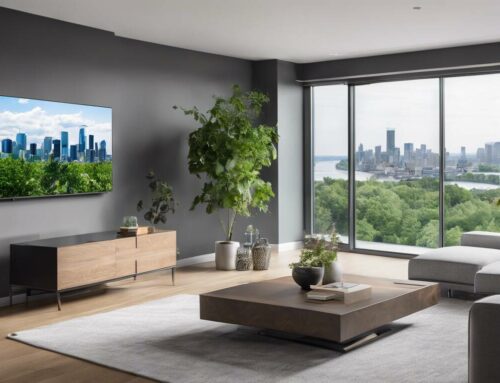February 20, 2024
Allergens in Indoor Air: Testing and Control

in Montreal, traces of dust mites, mold spores, pet dander, and pollen lurking in your indoor air may pose health risks. These common allergens add to issues related to allergies, asthma, and other respiratory problems. But surprise – it’s not just those culprits you need to worry about. Your indoor air might also carry invisible pollutants such as volatile organic compounds from everyday household items, tobacco smoke, or even tiny particulate matter. To breathe easy, it’s time to learn about them.
Common allergens found in Montreal indoor air include pollen, mold spores, dust mites, and pet dander. Controlling these allergens involves regular air quality testing, maintaining proper ventilation, using HEPA filters, and cleaning surfaces regularly to reduce allergen accumulation. Consult with a professional air quality testing service for a comprehensive assessment and personalized recommendations.
Health Effects of Indoor Air Allergens
When we think about allergic reactions, whether it’s sneezing fits or itchy, watery eyes, it’s crucial to remember that these symptoms vary in intensity from person to person. For some individuals, exposure to common indoor allergens like dust mites, mold spores, pet dander, and pollen can result in immediate discomfort. Others may experience more severe reactions such as asthma attacks or long-term respiratory issues.
Allergies affect more people than you might imagine; it’s not just a matter of feeling a little sniffly around cats or dogs—although that happens too. Unfortunately, for some individuals, with repeated exposure to allergens over time, the immune response causes inflammation in the airways and could lead to the development of chronic conditions such as asthma. Mold spores, for instance, can become airborne and be inhaled deeply into the lungs, exacerbating symptoms in people who are already dealing with respiratory issues. Air quality tests can help identify specific allergens present in your indoor environment.
It’s quite amazing how something so small—an invisible speck of dust or a microscopic mold spore—can create such a significant impact on our daily lives and overall health. Many people don’t even realize the extent to which their indoor environment may be affecting their well-being.
For instance, pet owners who love their furry companions might not notice the buildup of pet dander in the air. When guests with pet allergies come over and experience difficulty breathing or develop skin rashes, it becomes clear that the presence of allergens is impacting their health.
Understanding the potential health impact of these indoor air allergens sets the stage for implementing effective strategies to mitigate their effects on our daily lives and overall well-being.
Recognizing the severity of health implications due to indoor air allergens sets the foundation for implementing effective strategies and control measures to safeguard our health.
Overview of Indoor Air Pollutants in Montreal
Volatile Organic Compounds (VOCs) are toxic gases emitted from certain solids or liquids, including household products, paints, and cleaning supplies. These substances can cause short-term and long-term health effects, such as headaches, dizziness, and damage to vital organs like the liver, kidneys, and central nervous system.
Identifying VOC Triggers
“Reducing exposure to harmful VOCs calls for an understanding of their common sources. By knowing where these toxins originate, you can implement targeted strategies to minimize their presence in your indoor environment.”
Household Cleaners: Products like bleach, toilet bowl cleaners, and oven cleaners often contain high levels of VOCs. When used indoors, these chemicals release harmful fumes that linger in the air and can lead to respiratory irritation.
Furniture and Flooring: Materials like particleboard used in furniture and laminate flooring may emit formaldehyde—a VOC known for its adverse health effects with prolonged exposure.
Strategies to Reduce VOC Levels
To mitigate VOC emissions:
- Opt for low-VOC or VOC-free cleaning products, paint, adhesives, and sealants.
- Allow new furniture and flooring to off-gas in a well-ventilated area before bringing them indoors.
- Use air purifiers equipped with activated carbon filters to capture VOCs within the home.
Fine Particulate Matter (PM2.5) consists of microscopic particles derived from vehicle exhaust, industrial emissions, and combustion processes. These particles can penetrate deep into the lungs and bloodstream, causing respiratory issues and exacerbating conditions such as asthma.
Reducing Exposure to Fine Particulate Matter
Informed actions can significantly mitigate exposure to PM2.5:
Monitoring Air Quality: Stay informed about local air quality conditions by utilizing government resources or monitoring apps.
Use Air Filtration Systems: Employ HEPA air purifiers to filter out fine particulate matter from indoor air, especially during high pollution days.
Biological pollutants such as mold spores, bacteria, and dust mites are also critical indoor air quality concerns.
“Addressing biological pollutants requires attention to hygiene and comprehensive moisture control measures within the home.”
Promoting Healthy Indoor Environments
Educate on effective tactics for minimizing biological contaminants:
- Maintain indoor humidity levels between 30-50% to discourage mold growth.
- Clean bedding, curtains, and rugs regularly using hot water to eliminate dust mites.
- Conduct thorough inspections for leaks or damp areas while ensuring prompt repairs where necessary.
As we explore these intricate details of Montreal’s indoor air pollutants, it’s clear that an informed approach is crucial for maintaining optimal indoor air quality standards.
Approaches for Identifying Allergen Sources
One of the most effective ways to identify the presence of allergens in your indoor air is through professional air quality testing. Expert air quality testing services in Montreal, provided by reputable companies such as airqualitytesting.ca, can offer comprehensive assessments of the specific allergens present in your indoor air. Through their services, these professionals can pinpoint the sources of contamination and guide targeted solutions.
Visual inspection is another approach that can be conducted independently without professional assistance. By visually inspecting the property for signs of moisture, mold growth, and areas with high dust accumulation, you can identify potential allergen sources.
Moisture and mold are key contributors to poor indoor air quality. Conduct a thorough visual inspection of areas susceptible to moisture accumulation, such as basements, bathrooms, and kitchens. Look for water stains on walls and ceilings, peeling paint or wallpaper, and visible mold growth.
Similarly, focus on checking heating, ventilation, and air conditioning (HVAC) systems and filters, which can harbor dust, debris, and mold spores. Additionally, inspect areas with high dust accumulation, such as carpets, upholstery, and drapes. Noting these areas provides insight into potential allergen sources that may be impacting the indoor air quality.
Another valuable strategy is to consider recent activities or changes in the property that may have contributed to deteriorating air quality. For example, renovation or construction work can release dust particles and volatile organic compounds (VOCs) into the indoor environment, affecting occupants’ health.
In homes with pets or where outdoor elements may easily enter, detailed cleaning routines involving vacuuming, dusting surfaces, and laundering linens can help reduce the presence of common indoor allergens such as pet dander and pollen.
Importance of Professional Assistance
While independent visual inspections can provide preliminary insights into potential allergen sources, engaging professional air quality testing services offers a conclusive and detailed analysis of indoor air quality. This comprehensive approach helps ensure that all potential allergens are accurately identified and addressed accordingly.
Flipping our focus from identification to mitigation strategies directs us to explore methods for combating these allergens that have invaded our living spaces.
Controlling Allergen Contamination with Air Purifiers
Air purifiers act as guardians that protect your indoor air quality. Equipped with HEPA (high-efficiency particulate air) filters, they are adept at capturing tiny particles such as pet dander, pollen, dust mites, and some bacteria.
When it comes to air purifiers, their effectiveness is greatly influenced by placement. It’s akin to strategically positioning security cameras in your home; ensuring coverage of all the essential areas is crucial.
Here are some key areas where placing an air purifier can have a substantial impact:
Bedroom
An air purifier in your bedroom can be incredibly helpful as it is where you spend a substantial amount of time sleeping and recharging. A clean and allergen-free atmosphere can significantly improve sleep quality by reducing exposure to dust mites and pollen.
Living Room
Placing an air purifier in your living room helps combat everyday dust and airborne particles. As a common area, it’s where everyone congregates, including pets that may carry allergens on their fur.
Home Office
In workspaces, we not only share the environment with our computers but also with microscopic particles from paper dust and mold. An air purifier can help maintain fresh air and reduce allergic reactions caused by prolonged exposure.
It’s essential to change the filter regularly—similar to replacing the bag in your vacuum cleaner. Also, ensure that the purifier is appropriately sized for each room.
With consistent use of air purifiers at strategic locations indoors, not only can you minimize allergens but also provide relief for allergy sufferers by improving indoor air quality. It’s like having an invisible shield protecting your space from unwanted guests—only these guests are microscopic irritants!
Ensuring optimal indoor air quality takes vigilance and technology plays a pivotal role in this endeavor. Now, let’s explore how harnessing technological advancements can further enhance allergen control.
Leveraging Technology for Allergen Control
In recent years, air purifiers have evolved significantly. They have transformed from being standalone devices to becoming “smart” appliances that integrate with your mobile phone, providing real-time insights into your indoor air quality. This means that you can now manage the air quality in your home or office from anywhere.
Smart air purifiers have built-in sensors that continuously monitor the air for allergens, dust, and other contaminants. These sensors send data to an app on your phone, providing a live view of your indoor air quality. This technology streamlines allergen control, making it convenient and efficient.
For example, if pollen is accidentally brought indoors when you’re not at home, you receive a notification from your smart air purifier about the increased pollen count. You can then activate the purifier remotely to trap the pollen particles before entering.
Another valuable aspect is the automatic operation based on real-time air quality data. When these smart devices detect a decrease in air quality due to increased dust or allergens, they operate more efficiently to clean the air. Additionally, they maintain energy efficiency by automatically adjusting settings when they’re not required—ensuring optimal performance while conserving energy.
The integration of advanced technology into air purifiers has significantly raised the bar for allergen control, offering not only remote access but also personalized indoor air purification based on real-time conditions.
With technology playing a vital role in controlling allergens, it’s time to explore effective methods for assessing indoor air quality.
Effective Methods for Assessing Indoor Air Quality

When it comes to ensuring our indoor environments are healthy, there are a few key methods to consider. Many individuals often find themselves feeling overwhelmed and unsure where to start when encountering odors or noticing signs of allergies in their homes. However, understanding a few fundamental methods can make all the difference.
One highly effective way is through professional indoor air quality assessment services. These providers have the expertise, tools, and technologies needed to give homeowners peace of mind by conducting thorough evaluations of indoor air quality. Companies like AirQualityTesting.ca not only specialize in this type of assessment but are also equipped to examine allergen levels, Volatile Organic Compounds (VOCs), and various other pollutants.
Benefits of Professional Assessment
These professionals use specialized equipment that can detect minuscule particles and provide detailed reports with findings and recommendations. By relying on professional services, individuals can feel confident in addressing any health concerns that may arise from poor indoor air quality.
Here’s an example: Imagine hiring a professional cleaner who uses powerful vacuum cleaners to remove dirt from your house. This is somewhat like professional indoor air quality assessment.
DIY Air Quality Monitors
On the other hand, consumers have the option to purchase DIY air quality monitors. These devices allow homeowners to monitor allergen levels in real time, providing critical data that can inform the implementation of targeted control measures. Data from these monitors empowers individuals to adjust their cleaning or ventilation strategies proactively to maintain a healthy environment.
In simple terms, having a DIY air quality monitor at home is similar to regularly checking your car’s fuel gauge – it helps you ensure everything is running smoothly.
By being aware of these two primary methods of assessing indoor air quality, individuals can feel confident in taking proactive steps toward a healthier living space.
If you’re concerned about the air quality in your home, don’t hesitate to take action! Whether you choose professional indoor air quality assessment or opt for a DIY monitor, addressing indoor air quality issues promptly is essential for maintaining a healthy environment. You deserve clean, healthy indoor air—contact AirQualityTesting.ca today and get air quality testing services.



